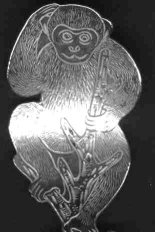More than most ever wanted to know - but just the tip of the iceberg.
The conversion of matter to energy, in accord with Einstein's e=mc*c , is well documented and proven. Has the opposite of energy to matter been proven. I do not consider nuclear fusion to be an example, since it is an energy producing event - not an event that produces new matter from energy.
The conversion of energy into matter, the reverse of matter-to-energy conversion described by Einsteinâs E=mc2E = mc^2E = mc^2
, has indeed been experimentally observed and proven, though it is less commonly discussed outside specialized physics contexts. Unlike nuclear fusion, which youâve excluded as it primarily produces energy, the process of creating matter from energy is most directly observed in specific high-energy physics phenomena. Hereâs a concise overview:
Pair Production: The most well-documented example of energy-to-matter conversion is pair production. When a high-energy photon (gamma ray) with energy exceeding 1.022 MeV (twice the rest mass energy of an electron) passes near an atomic nucleus, it can convert into an electron and a positron. This process satisfies E=mc2E = mc^2E = mc^2
, as the photonâs energy is transformed into the mass of the particle-antiparticle pair. This has been repeatedly observed in particle accelerators and cosmic ray interactions since the 1930s, with experiments like those using cloud chambers and modern detectors confirming the phenomenon.
Particle Accelerators: In high-energy collisions, such as those at the Large Hadron Collider (LHC), energy from accelerated particles can produce new particles (matter). For instance, when protons collide, the kinetic energy of the collision can materialize into additional particles, like quarks or mesons, as predicted by quantum field theory and E=mc2E = mc^2E = mc^2
. These experiments routinely demonstrate energy transforming into matter.
Theoretical and Experimental Rigor: The conversion is grounded in quantum field theory, where energy fluctuations can create particle-antiparticle pairs, conserving energy and momentum. These processes are not speculative; theyâve been measured with high precision in controlled settings, such as in positron emission tomography (PET) scanners, where positron annihilation (the reverse process) indirectly confirms pair production.
Limitations: Creating macroscopic amounts of matter from energy is impractical due to the enormous energy required (since c2c^2c^2
is a huge factor). Most observations involve subatomic particles, as producing larger amounts of matter would demand infeasible energy inputs.
To address your condition, these examples avoid fusion-like processes and focus on direct energy-to-matter conversion. Pair production and particle accelerator results are the clearest experimental proofs, consistently verified since the early 20th century. If youâd like more details on specific experiments or the physics behind these processes, let me know!

Finally, brethren, whatsoever things are true, whatsoever things are honest, whatsoever things are just, whatsoever things are pure, whatsoever things are lovely, whatsoever things are of good ...
